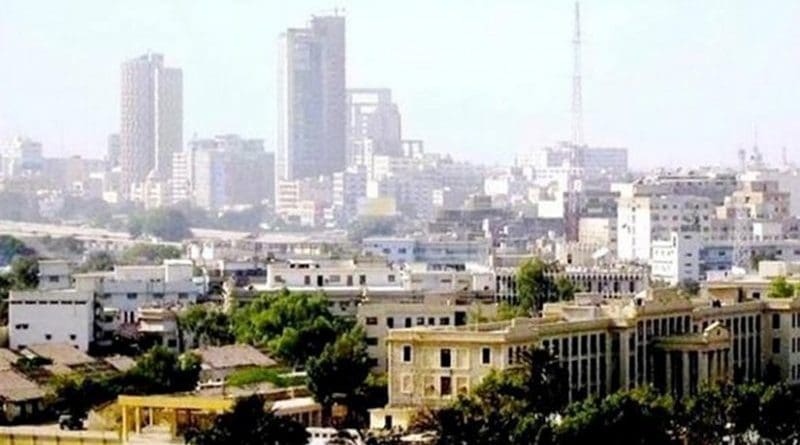New Economic Revival Plan: Revolutionizing Foreign Investments In Pakistan By Utilizing Special Investment Facilitation Centre (SIFC) Drivers – OpEd
By Sarah Saeed
Keeping in view Pakistan’s current economic crunch, the Special Investment Facilitation Centre (SIFC) has been established to stabilize the economy and set it on a sustainable trajectory.
The civil-military partnership has painstakingly crafted a long-term plan with the aim of releasing the untapped potential of 240 million individuals and the resource-rich land by opening it up to foreign direct investment. To guarantee that feasible measures are executed immediately and that finances are acquired, Gulf and Middle Eastern countries will be treated as first-line partners.
To ensure on-ground development, the coalition-led government has also decided to create a Special Investment Facilitation Council (SIFC), Pakistan’s Prime Minister Shabaz Sharif wrote on Twitter, “employing a whole-of-the-government approach, with an objective to develop economic policies that ensure policy predictability, continuity, & effective implementation to revive the economy.”
Supporting local growth and accelerating the implementation of ongoing projects is one of the initiative’s primary focuses.According to the “Economic Revival Plan,” Pakistan’s economy could surpass $1 trillion by 2035. The new plan, which is even more diverse than the $60 billion CPEC, aims to attract $100 billion in foreign direct investment over the next five years. Additionally, it transforms Pakistan’s economy by making it export-oriented via offering 75 million people opportunities for direct and indirect employment, raising export goals to $70 billion, and steadily lowering imports.
The military’s top leadership is making a crucial advancement in the process of reconstructing the country’s economy by exhibiting a dedication to an honest and open approach. SIFC starts with impactinginvestments, which includes giving money to companies with measurable objectives of making a positive influence on society. Second, Environmental, Social andGovernance (ESG)integration incorporates social and environmental factors into financial assessments to assist investors in selecting more profitable investments.
Thirdly, Investors have beenurged to utilize their influence to improve private businesses via shareholder advocacy. Lastly, sustainable finance and banking are expected to push financial companies to adopt green strategies. Because of this increased accessibility, foreign investors will have greater freedom to select the sites of their investments. Furthermore, shareholders can now transfer their gains in any currency of their choice, making it simpler, if required, to withdraw money from Pakistan.
SIFC has carefully selected essential industries with tremendous room for economic expansion. Some of these industries include mining and resource extraction, crop production, energy generation, information technology (IT), and defensemanufacturing. By directing foreign investment into particular sectors, SIFC aims to address crucial procedural issues, expedite policy changes, and create a climate that is favorable to investors.
Pakistan’s economy depends heavily on the agriculture industry. However, it encounters several challenges, such as outdated farming practices, water shortage and lack of technological advancements. The SIFC’s focus on agriculture reveals its dedication for tackling these problems and inviting foreign investment to modernize the sector, increase productivity, and enhance export capabilities. Furthermore, 60% of agricultural projects and 100% of corporate agriculture farms can now be owned by foreign investors, enabling them to fully engage in the agriculture industry.
Additionally, in real estate, now that international developers may confidently participate in Pakistan’s real estate market, there are more opportunities for foreign investors in this sector.
In case of energy sector, Pakistan still struggles with a shortage of energy and an excessive reliance on fossil fuels notwithstanding recent improvements. SIFC’s engagement in this sector is intended to attract international investment to the area, increase energy efficiency, and strengthen the country’s energy infrastructure.Another significant contributor to the growth of the global economy is the IT sector. While Pakistan has a large pool of IT professionals, the sector faces challenges such aslackluster infrastructure and difficult access to finance. Because of the realization that IT has the ability to spur economic growth, SIFC is focusing on this area by seeking to entice international investment to encourage innovation, update infrastructure, and provide job opportunities.
Mines and precious stones are an abundant natural resource of Pakistan. However, the business faces challenges such as outdated mining techniques and a lack of finance for exploring and mining. With its engagement in this sector, SIFC seeks to attract foreign investment to modernize mining operations, improve environmentally sustainable practices, and increase the value of the country’s natural resources for economic growth.
Defense production is another vital sector that contributes significantly in economic growth. In this area, the SIFC’s focus on defense manufacturing aimed to attract foreign investment, promote joint ventures, and enhance the capabilities of the defense sector. A politically unhindered economic development and progression modelhas helped several countries overcome these challenges. One nation that has prospered greatly by following a 30-year plan outlined in its Constitution is Ghana. There are numerous other examples of nations coming together by setting aside their differences for a united and stronger state. Similarly, for the people of Pakistan,primary goal should be Pakistan’s economic turnaround now being made possible under the multi-dimensional SIFC initiative.

